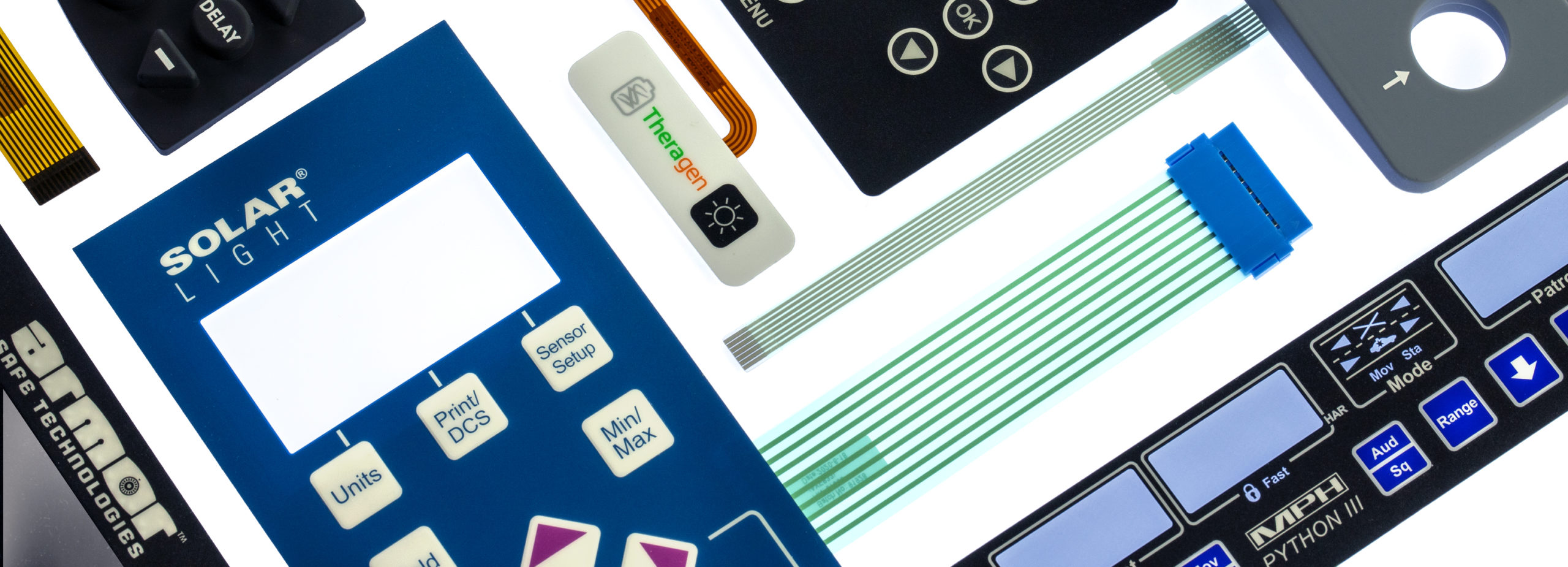Recognizing Membrane Layer Switches Over: The Trick to Reliable and sturdy Controls

What Are Membrane Switches?
Membrane buttons are an innovative solution in the realm of interface technology, integrating performance and layout effortlessly. These gadgets act as an interface in between users and electronic systems, integrating a number of components into a small style. Normally created from flexible, slim layers of products, membrane layer buttons are created to react to touch, making it possible for individuals to connect with machinery and electronic devices efficiently.
The key elements of a membrane layer button include a printed circuit layer, visuals overlay, and a spacer layer that stops unplanned activation. The graphic overlay can be personalized to mirror brand name identification or customer preferences, enhancing visual appeals while making sure functionality. Membrane switches are generally made use of in various applications, including clinical gadgets, customer electronic devices, and industrial tools, owing to their resilience and resistance to ecological factors such as dampness and dirt.
One of the essential benefits of membrane buttons is their capability to hold up against deterioration, making them ideal for high-traffic environments. In addition, they are lightweight and call for very little space, enabling ingenious layouts in product development. Generally, membrane switches stand for a reliable and useful selection for contemporary electronic user interfaces, marrying modern technology with user-centric style concepts.
How Membrane Layer Changes Job
The operation of membrane layer switches over hinges on an easy yet efficient device that translates customer input right into digital signals. When a user presses the switch, the top layer warps, permitting a conductive element in the circuit layer to make contact with a matching conductive pad on the bottom of the visuals overlay.
The layout of membrane layer switches can vary, but they commonly include domes or responsive components to provide comments to the individual, improving the total experience - membrane switch. The materials made use of in membrane switches, such as polyester or polycarbonate, contribute to their durability and resistance to environmental factors, consisting of wetness and dirt. Moreover, the published circuits are commonly encapsulated, which shields them from wear and tear over time.
Benefits of Membrane Layer Buttons

Additionally, membrane switches are understood for their durability. Constructed from robust materials, they are resistant to dust, wetness, and physical wear, which substantially prolongs their life expectancy contrasted to standard mechanical buttons. This toughness makes them particularly suitable for high-traffic environments and applications requiring longevity.
An additional substantial advantage is the simplicity of cleaning and maintenance. The smooth surface area of membrane changes reduces dust buildup and is frequently impervious to spills, making them perfect for settings that require constant sanitization.
Additionally, membrane layer buttons use a streamlined profile, leading to a thinner layout that can be integrated into various tools without including bulk. This you could look here feature not just improves the aesthetic allure yet likewise adds to an extra ergonomic item style.
Applications of Membrane Buttons
Flexible and easy to use, membrane buttons discover applications across a wide variety of markets, including clinical gadgets, customer electronics, and industrial devices. In the medical area, these switches are indispensable to gadgets such as diagnostic devices, client monitoring systems, and mixture pumps, where reliability and convenience of cleaning are essential. Their capability to hold up against harsh environments and maintain functionality makes them excellent for such applications.

In customer electronic devices, membrane layer switches are made use of in items like microwaves, washing devices, and remotes - membrane switch. Their sleek style permits intuitive individual interfaces, enhancing the general individual experience while giving toughness and resistance to tear and wear
Industrial equipment likewise takes advantage of membrane buttons, specifically in control panels for machinery and automation systems. These switches provide defense versus dirt and moisture, making sure regular efficiency in tough environments. Moreover, their personalized attributes permit manufacturers to tailor them to particular operational requirements, boosting performance and capability.
Picking the Right Membrane Layer Switch Over
When picking a membrane layer button, it is crucial to take into consideration numerous aspects that affect efficiency and suitability for specific applications. The primary factors to consider consist of ecological conditions, tactile feedback, durability, and design requirements.
First, analyze the operating atmosphere; switches subjected to dampness, chemicals, or extreme temperature levels need particular materials to make certain durability and performance. Next, review the requirement for tactile responses. Depending upon individual interaction, some applications may take advantage of a responsive reaction to validate activation, while others might choose a non-tactile layout for visual reasons.
Resilience is an additional essential aspect; membrane buttons discover this need to be developed to endure constant use, influences, and abrasion. Guarantee the picked switch can withstand the expected lifecycle, especially read this post here in high-usage situations.

Conclusion
In conclusion, membrane switches over offer as crucial components in the style of trusted and resilient control systems across numerous sectors. The flexibility of membrane layer switches over allows for tailored services that satisfy details functional needs, strengthening their relevance in modern-day innovation.
Membrane switches represent an important facet of modern-day interface design, blending performance with durability in different applications.Membrane layer buttons are an innovative solution in the world of individual interface innovation, integrating performance and style effortlessly. Commonly created from adaptable, slim layers of products, membrane layer switches are designed to respond to touch, enabling users to interact with equipment and digital tools properly.
The style of membrane layer switches can vary, but they often incorporate domes or tactile elements to provide responses to the customer, improving the overall experience.In conclusion, membrane layer switches over offer as necessary elements in the design of durable and reliable control systems throughout various sectors.
Comments on “Membrane Switch: A Comprehensive Guide to Its Uses and Applications”